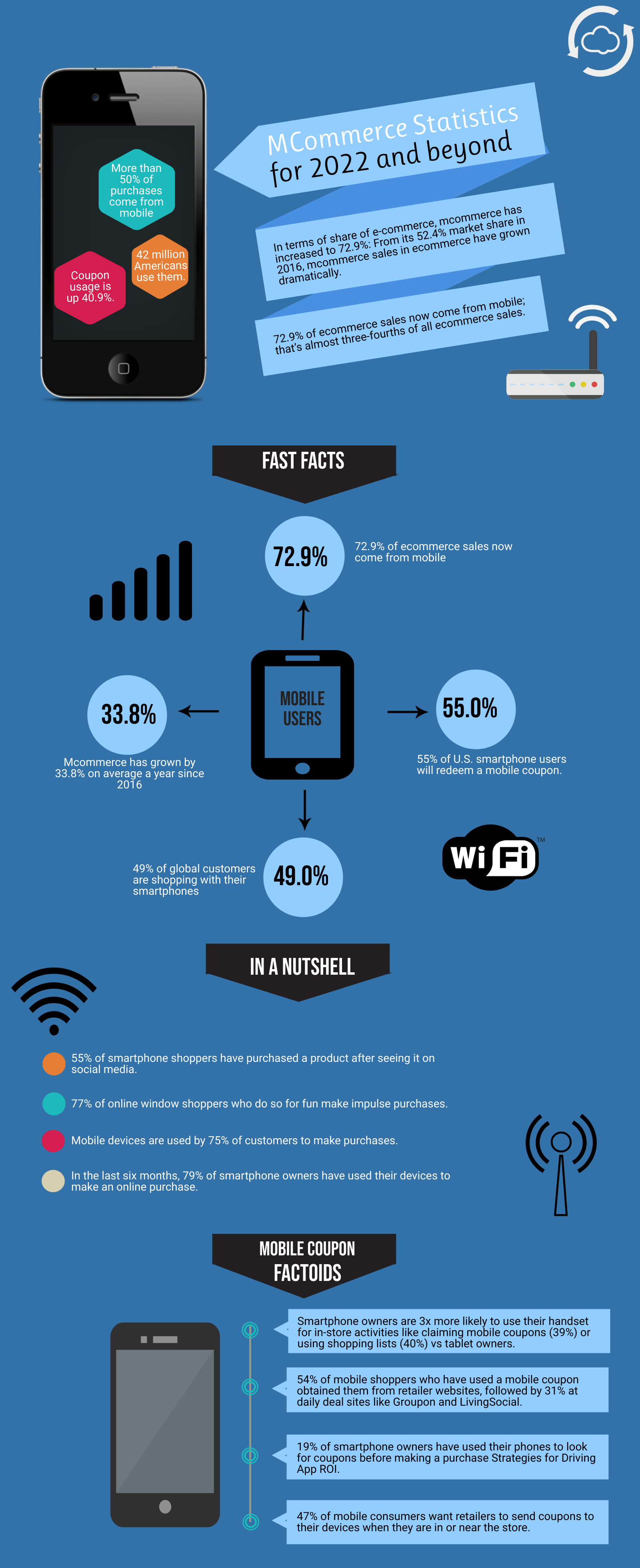As the fastest growing ecommerce trend, voice shopping is indeed the hype nowadays- for a good reason. It’s a trend that ecommerce business owners can’t afford to overlook.
Voice commerce refers to leveraging voice recognition tech to buy services and goods online. It enables customers to make purchases via voice commands instead of manually typing out keywords on mobile devices or computers.
However, before you launch into optimizing your ecommerce business for voice search, it is imperative to know some of the essential voice shopping statistics and facts to wrap your head around. In addition, you also need to know the most popular and preferred devices that offer voice shopping and search features, where this channel is most popular and more. Read on to learn more.
Voice Shopping is the Future
Voice-enabled shopping has experienced considerable traction in the last few years. With the increase in the products in the digital markets, professionals predict an additional hike in demand for the voice-driven customer experience.
By 2022, 55% of all US households and 48% of UK households will have smart speakers with voice shopping reaching 40 billion dollars by the same year. This growth in voice shopping can be a game-changer for ecommerce businesses. So, overlooking statistics on voice shopping for ecommerce can mean losing a lucrative opportunity.

Voice-Enabled Devices Are Growing Rapidly
➡️ Smart speaker sales reached a record high (150 million units) in 2020. Despite the COVID-19 outbreak, there was a significant surge in demand for smart speakers in 2019 — particularly throughout the holiday season (Q4). (Business Wire)
➡️ By 2022, 55% of family units are projected to have smart speaker devices. That will be a 42% hike from the household ownership numbers today (OC&C Strategy Consultants)
➡️ The sales of global intelligent speakers are expected to exceed 30 billion dollars by 2024. Soon, smart speakers will be amongst the top-selling customer electronic products (Global Market Insights)
➡️ 34% of the individuals who don’t have a voice assistant want to purchase one. Late adopters are certainly going to grow the market of smart speakers (Global Web Index)
Voice-Enabled Interaction
➡️ 65% of individuals aged 25 to 49 talk to their voice-enabled devices once daily. This 25 to 49-year-old demographic is presumably to conduct voice searches daily, followed narrowly by users aged 18 to 24 and 50-plus-year-old age groups, respectively. Even though the 25 to 49-year-old age group is quite an active voice searcher group, the 18-24 demographic is accredited with assisting to propel early acceptance of the advancements.
➡️ Wearable device owners (71%) forecast they will perform more voice searches down the road. Though wearable device users are pretty optimistic, speaker and tablet users aren’t far behind.
➡️ 61% of the 25 to 64 age group prefers using their voice devices more. The 18 to 24-year-old age group reflects this trend, with 57% stating that they will increase the use of voice devices in the upcoming years.
➡️ 93% of the customers are satisfied with voice assistants. The significant advantages customers cite for leveraging voice speakers are the capability to get instant answers to their questions, make their lives stress-free, and multitask.
➡️ 30% of the website browsing sessions were screenless in 2020. This propelled a shift in the ways customers interact with the brands online.
➡️ 65% of Google Home and Amazon Echo users can’t imagine returning to prior methods when they had intelligent speakers. For many, smart speakers aren’t merely devices but an essential part of their routine.
➡️ In 2020, voice shopping generated more than $2 billion dollars in sales. Moreover, voice shopping revenue was projected to skyrocket in 2021. Specifically, based on the recent statistics, the voice shopping market is projected to reach $40 billion dollars by 2022.
➡️ About 20% of the total queries with voice search are prompted by 25 keywords set. These comprise primarily of question words such as “what” or “how” and adjectives such as “easy” or “best.”
for keywords and content.
Voice Shopping Purchases
➡️ About 43% of voice-enabled device users leverage their gadgets to shop. Customers across various age groups are leveraging their devices to help with purchasing online — a 41% rise in 2018 only.
➡️ By 2022, voice is projected to be a significant channel with 40 billion dollars. Today, voice shopping contributes about $2 billion dollars in consumer spending. So, to take advantage and make most of this revenue-generating growth opportunity, marketers today must comprehend their consumer’s voices.
➡️ Smart speaker (11.5%) device owners purchase through voice shopping monthly. This equates to about 5.5 million American adults purchasing through their smart speaker daily (Voicebot)
➡️ Smart speaker owners (52%) are interested in getting information about brand promotions, sales, and deals.Customers are open to creating meaningful relationships with brands through voice shopping channels.
➡️ 51% of customers who shop through voice leverage it to find products. And 22% of those customers make purchases through voice directly, whiole 17% have leveraged it to reorder goods.
➡️ In 2021, about one in three (32%) US customers will possess intelligent speakers. This shows an 8% increase from 2020.
➡️ Approximately 7 out of 10 customers (71%) prefer using voice searches for a query over the conventional method of entering.
➡️ In 2022, the latest research numbers demonstrate that 2 million customers in the United States are projected to purchase using the voice search functionality on their smart speakers.
➡️ 72% of US customers engage with voice search via digital assistants such as Alexa, Siri, Cortana and Google Assistant.
➡️ Despite being accessible universally, 62% of the customers would leverage their voice assistants while multitasking.
Conclusion
The constant development of ecommerce demonstrates that the customers’ preferences for online shopping are paramount to consider. While customers love to explore their opportunities on the internet and purchase what they want without visiting a physical store, voice shopping has entirely redefined the online customer experience.
Moreover, voice search statistics demonstrate that voice shopping is not going anywhere and is here to stay. More innovative and advanced devices will keep striking the market and make the voice search more accessible. As a result, more customers will use beneficial features and influence this technology’s growth.
Now that you know some critical voice shopping statistics, you can start integrating them into your ecommerce business strategy to accomplish your goals.
Need Even More Tips?
We leave you with this illustrated infographic to better help you understand some of the most pertinent statistics you should know about mobile commerce in 2022 and beyond.
We’ve also got you covered with a few awesome and related guides you’ll want to read sooner than later.











